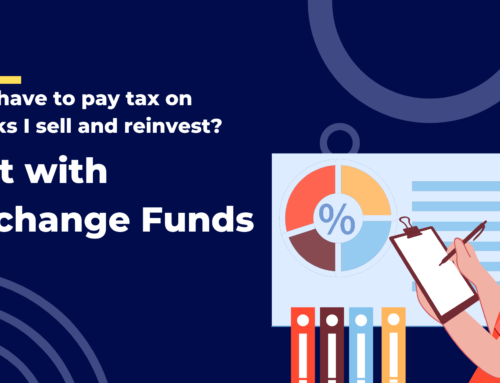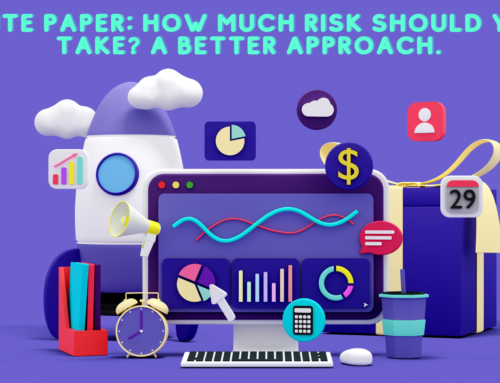On Monday February 5th 2018, the Dow Jones fell 1174 points on top of a steep rise in volatility from the week before putting the stock market in the red for 2018. While this is the worst one day drop since 2011, it is likely far from the end of the bull market. As Bloomberg recaps the rout as a reaction to the return of inflation and a rise in treasury rates – Ironically, it is what the economy has been waiting for for nearly 9 years. Remember that the Dow was at an all-time high just a few weeks ago. The most rational explanation for the recent sell off I heard from Goldman Sachs which stated that the rate of change in in treasury yields and the average hourly earnings were so acute, many market participants felt that the Federal Reserve Bank would have to start raising rates and effectively remove the easy money punchbowl we have become so accustomed to. So now that the world economy can stand on its own without the help of central bank stimulus, what does the market do, it sells off! Hmmmm, not sure that makes sense to me, however, if you are a student of behavioral finance, perhaps it makes a great deal of sense.
I will not dwell on the specifics of the recent dip in the market except to note that the market was up 5.6 percent in January and despite Monday’s decline we are barely in the red for the year 2018. Professor Meir Statman, one of the fathers of of Behavioral Finance is well known for his quote that “people in standard finance are rational. People in behavioral finance are normal.” This can simply be interpreted that normal people can behave irrationally, and most people do not behave perfectly rationally. This is particularly true when making decisions under uncertainty. Human beings make thousands of decisions daily, most of which do not have outcomes significant enough to merit their attention. When it comes to their retirement savings and wealth, which is of course, highly significant, decision making under uncertainty can become very difficult, especially when the market becomes as volatile as it recently has.
Furthermore, since these decisions may have significant consequences, a rational person SHOULD use a systematic approach to analyze the situation, collect data and formulate the optimal decision. However, most people take shortcuts based on their judgements and preferences rather than data and facts. The tendency towards taking shortcuts in our decision making is outlined in a book published in 1982 called Judgement under Uncertainty: Heuristics and Biases by cognitive psychologists Daniel Kahneman and Amos Tversky. From their research, they developed what they called Prospect Theory. Prospect Theory describes how individuals evaluate between profits and losses. What they determined is simply that people fear pain twice as much as they enjoy positive outcomes. This proclivity towards taking shortcuts based on their judgements and preferences rather than data and facts makes it easy to understand why so many sell-off during market pull backs despite data and facts that point to the global economy is getting better. Please read my colleague Colby Davis’ recent post Everything is Getting Better: 2018 Edition for more on just how many great things are happening these days!
So, what is rational behavior considering the recent market volatility? First, it would be smart to review all available information to evaluate what to do next (impossible to do because there is nearly an infinite amount of data to collect, moreover analyze it properly). Next, put together a list of what you could do and the outcomes that may occur as well as all the assumptions that they are predicated on. Finally, develop the optimal decision and act on it. Wow, no rational person would or could do all this because, in all likelihood, by the time you did all this work, the markets would be in an entirely different place and your whole systematic process would be for naught.
So, what then is a rational person to do? Let’s review the basic facts about the markets and the economy today and see if it can at least help us get through tomorrow. The fundamental economic data around the globe is extremely robust, with developed markets in above trend growth mode and little risk of impending recession due to still very accommodating monetary policy. With regard to the recent rout, UBS points out that “when economic data surprises have been positive, equity pullbacks have averaged 5%, suggesting that last weeks 4% sell off may be close to an end.” While some people speculate that the bull market is over because it has gone on for a long time, Goldman Sachs points out that since 1980, the economic cycles have become longer as central banks more aggressively targeted inflation, macro volatility declined, and macro-prudential policies improved financial system stability. While it pays to be cautious in a market which is a bit on the expensive side, the best thing a rational person can do is wait it out in a diversified portfolio.

In conclusion, it is normal behavior to be concerned considering recent market volatility, rational behavior is to not to head for the exit during tough times but to understand one of Warren Buffet’s greatest maxims on the market and that is “The stock market is a device for transferring money from impatient to the patient.” I plan on writing more about behavioral finance in the coming months, so stay tuned.
Disclosures: This post is solely for informational purposes. Past performance is no guarantee of future returns. Investing involves risk and possible loss of principal capital. No advice may be rendered by RHS Financial, LLC unless a client service agreement is in place. Please contact us at your earliest convenience with any questions regarding the content of this post. For actual results that are compared to an index, all material facts relevant to the comparison are disclosed herein and reflect the deduction of advisory fees, brokerage and other commissions and any other expenses paid by RHS Financial, LLC’s clients. An index is a hypothetical portfolio of securities representing a particular market or a segment of it used as indicator of the change in the securities market. Indexes are unmanaged, do not incur fees and expenses and cannot be invested in directly.






